
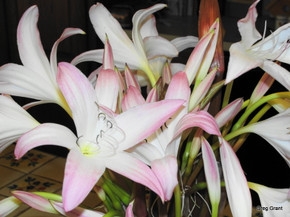
Large bulbs. These are some of the largest Summer Nocturne bulbs that we have ever carried (2025). They are between golf ball and tennis ball size! If you have a small area and have wanted a crinum, this smaller bulb variety is a great choice. This bulb has a sweet fragrance that will knock your socks off! A blush colored crinum with nice rosettes of foliage, the 'Summer Nocturne' blooms well throughout the summer from July to fall and is widely adapted to various soil conditions. It is one of Thad Howards hybrid crosses and, as with all of our crinums, is grown right here in the South.
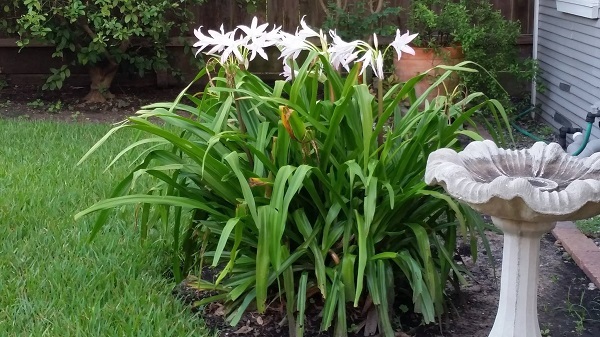
Planting: As with all crinums, the Summer Nocturne loves full summer sun. It needs at a minimum about 8-10 hours of direct sunlight. Plant it in well-drained soil or amend the clay. The Crinum 'Summer Nocturne' is often overlooked and doesn't get the recognition it really deserves. Why does this cost so much less than the other crinum? The bulbs are simply smaller than other crinum bulbs, but they multiply quickly. If they are smaller bulbs, will they be smaller plants? No, these lovely ladies will still get between 2-3 feet tall! Look at the picture above next to the bird bath.

Blooms: By late summer, most Crinum have already had their day in the sun. Just when you think the Crinum trumpet flowers have ended for the year along comes the blooms of the Crinum 'Summer Nocturne'. She doesn't even begin to bloom until July or August! The blooms are large 3-5 inch white trumpets tipped in very pale pink. The pink darkens as the bloom ages. The blooms have a unique lightly sweet scent. Each dark green flower spike the bulb shoots up produces 6-10 blooms.
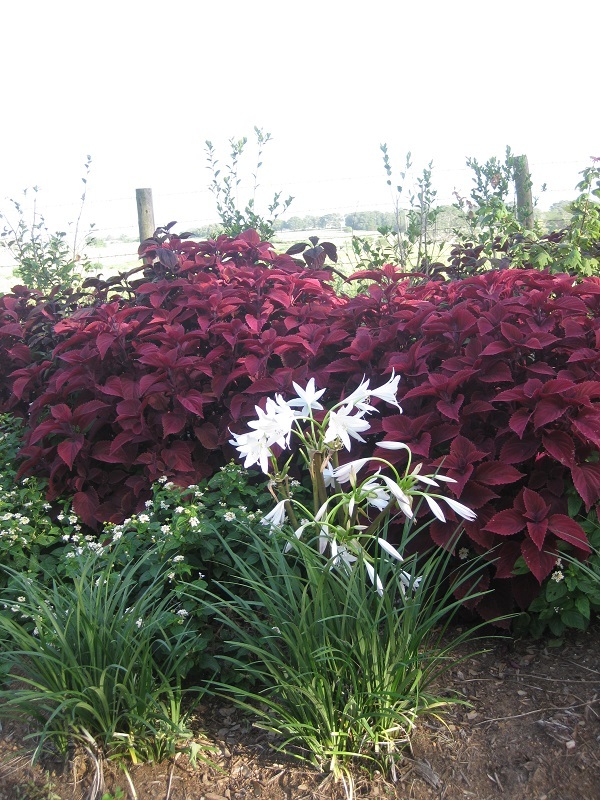
Foliage: The dark green foliage of the Crinum 'Summer Nocturne' is compact and generally tidy. This encourages you to allow the 'Summer Nocturne' to be front and center when you are searching for where to plant it.
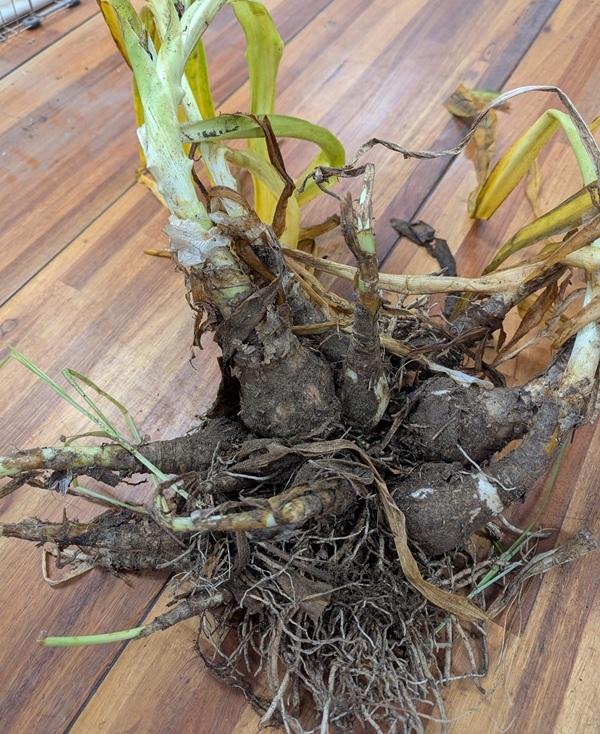
The picture above is from 2025 and shows the main bulb with 10 "baby" bulbs. This took a few years, but you will want to consider this when planting in a pot. When planted in pots, you will want to dig and divide this crinum every few years.
Container: If you have a small space, this is the probably best crinum to use in a container. The small bulbs give you plenty of room for other plants and bulbs in your container. We talk about containers needing plants that are thrillers, fillers, and spillers. The Crinum 'Summer Nocturne' is your thriller. Remember that the Zephyranthes labuffarosa was a great filler, but the strappy monocot foliage of the Crinum would pair well with common annuals you could buy at any garden center this time of year. You will want to bring your pot indoors during the winter if the temperatures get below 35 degrees.
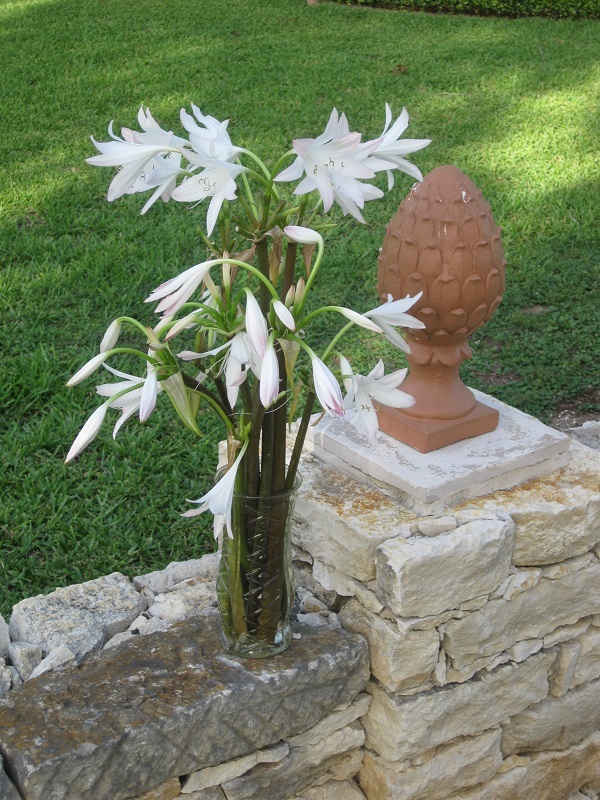
Animals: This crinum is adored by hummingbirds and bees. Like most crinum, the deer and other animals really tend to leave it alone.
History: This crinum was developed by Thad Howard in Texas in 1964 so even though it doesn't have the long history of some of the other crinum, it definitely has the durability for southern gardens.
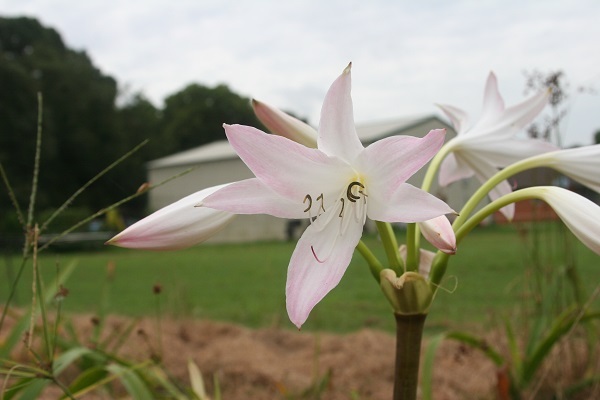
Large bulbs. These are some of the largest Summer Nocturne bulbs that we have ever carried (2025). They are between golf ball and tennis ball size! If you have a small area and have wanted a crinum, this smaller bulb variety is a great choice. This bulb has a sweet fragrance that will knock your socks off! A blush colored crinum with nice rosettes of foliage, the 'Summer Nocturne' blooms well throughout the summer from July to fall and is widely adapted to various soil conditions. It is one of Thad Howards hybrid crosses and, as with all of our crinums, is grown right here in the South.

Planting: As with all crinums, the Summer Nocturne loves full summer sun. It needs at a minimum about 8-10 hours of direct sunlight. Plant it in well-drained soil or amend the clay. The Crinum 'Summer Nocturne' is often overlooked and doesn't get the recognition it really deserves. Why does this cost so much less than the other crinum? The bulbs are simply smaller than other crinum bulbs, but they multiply quickly. If they are smaller bulbs, will they be smaller plants? No, these lovely ladies will still get between 2-3 feet tall! Look at the picture above next to the bird bath.

Blooms: By late summer, most Crinum have already had their day in the sun. Just when you think the Crinum trumpet flowers have ended for the year along comes the blooms of the Crinum 'Summer Nocturne'. She doesn't even begin to bloom until July or August! The blooms are large 3-5 inch white trumpets tipped in very pale pink. The pink darkens as the bloom ages. The blooms have a unique lightly sweet scent. Each dark green flower spike the bulb shoots up produces 6-10 blooms.

Foliage: The dark green foliage of the Crinum 'Summer Nocturne' is compact and generally tidy. This encourages you to allow the 'Summer Nocturne' to be front and center when you are searching for where to plant it.

The picture above is from 2025 and shows the main bulb with 10 "baby" bulbs. This took a few years, but you will want to consider this when planting in a pot. When planted in pots, you will want to dig and divide this crinum every few years.
Container: If you have a small space, this is the probably best crinum to use in a container. The small bulbs give you plenty of room for other plants and bulbs in your container. We talk about containers needing plants that are thrillers, fillers, and spillers. The Crinum 'Summer Nocturne' is your thriller. Remember that the Zephyranthes labuffarosa was a great filler, but the strappy monocot foliage of the Crinum would pair well with common annuals you could buy at any garden center this time of year. You will want to bring your pot indoors during the winter if the temperatures get below 35 degrees.

Animals: This crinum is adored by hummingbirds and bees. Like most crinum, the deer and other animals really tend to leave it alone.
History: This crinum was developed by Thad Howard in Texas in 1964 so even though it doesn't have the long history of some of the other crinum, it definitely has the durability for southern gardens.
